#Dale Oliver
Explore tagged Tumblr posts
Text
Movies and serials starring Charles Middleton aka Ming the Merciless.






























#my post#retro#horror#vintage horror#vintage#charles middleton#ming the merciless#flash gordon#the marx brothers#laurel and hardy#james cagney#horror movie posters#movie poster art#movie poster#boris karloff#alex raymond#king features syndicate#groucho marx#stan laurel#oliver hardy#harpo marx#errol flynn#sci fi#humphrey bogart#dale arden#batman#peter lorre#edward g. robinson#dc comics#james whale
69 notes
·
View notes
Text
I don't WANT another Toy Story movie. What I WANT is a cinematic universe that has the Great Mouse Detective, Basil of Baker Street as a founding member of the Rescue Aid Society, and the Rescue Rangers are an unlicensed, unsanctioned offshoot, because Chip and Dale got kicked out of the RAS by Director Bianca for being loose cannons.
#great mouse detective#the rescuers#the rescuers down under#chip and dale#rescue rangers#Also Oliver and Company fits in there somewhere#but I ran out of red string
99 notes
·
View notes
Photo

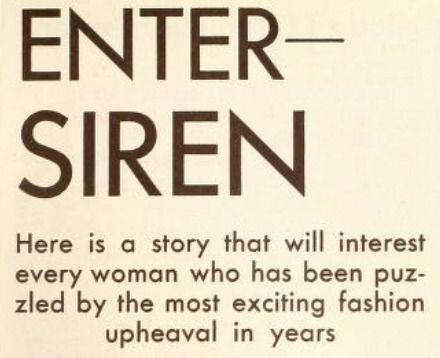


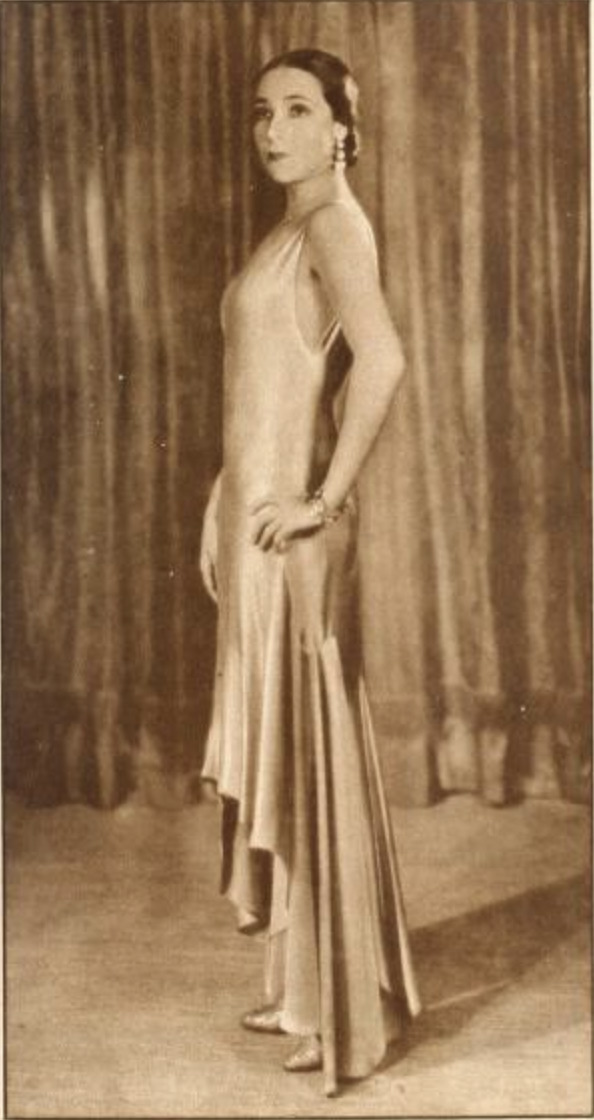
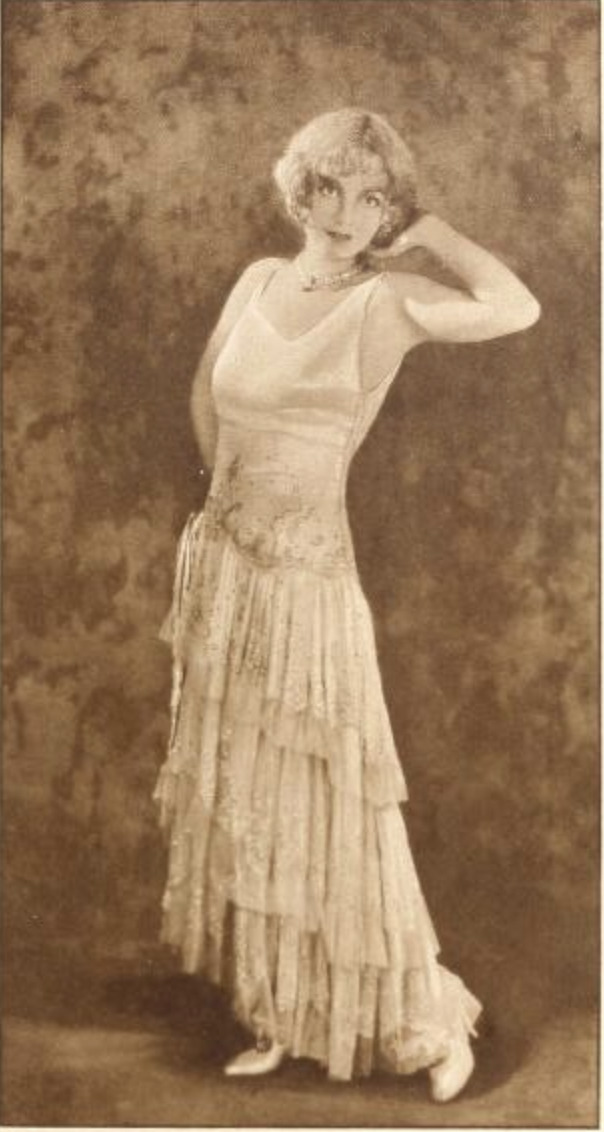

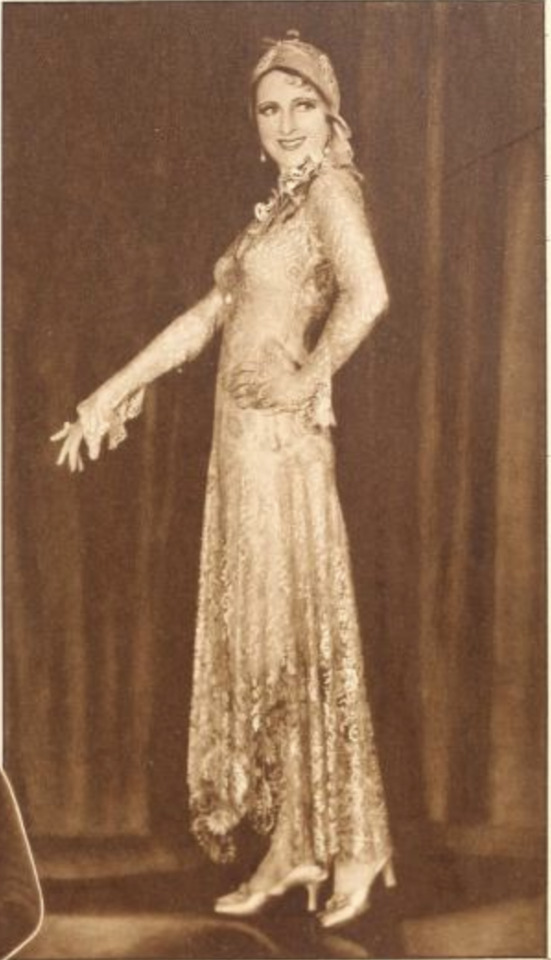
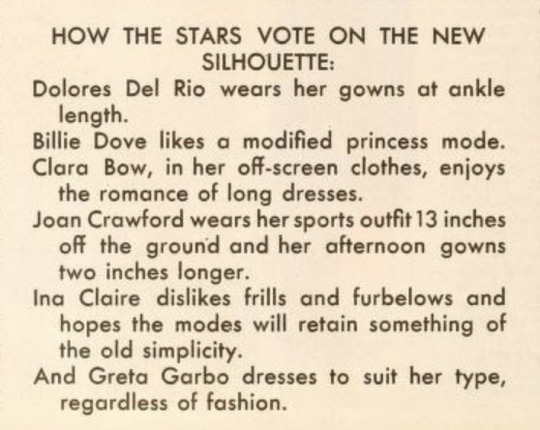
exit flapper, enter siren, featuring clara bow (who is growing out her bobbed hair), catherine dale owen, dolores del rio, alice white, olive borden, billie dove (1929)
#1920s fashion#1930s fashion#clara bow#dolores del rio#catherine dale owens#alice white#purrrrsonally i prefer the flapper style#olive borden#billie dove
189 notes
·
View notes
Text

16 notes
·
View notes
Text























The Incredible Hulk #396 -August 1992- Marvel Comics
"Frost Bite"
writer: Peter David
pencil art: Dale Keown
inker: Mark Farmer
letters: Joe Rosen
colors: Glynis Oliver
#the incredible hulk#marvel comics#bruce banner#the punisher#frank castle#peter david#dale keown#mark farmer#joe rosen#glynis oliver#comics
8 notes
·
View notes
Text


some highlights of adf behind the scenes clips
#as dusk falls#vince walker#tyler holt#dale holt#jay holt#josh taylor#jack bandeira#oliver britten#ryan nolan#gay#bisexual#i do NOT care listen y'all there's something about men
51 notes
·
View notes
Text

Beyond Chenille V-Neck Sweater in Olive Fun from Aerie (on sale: $45.46)
#Carmella#Carmella WWE#Leah Van Dale#Beyond Chenille V-Neck Sweater#sweater#sweaters#olive fun#Aerie#women of wrestling fashion#wwe
3 notes
·
View notes
Text

Up next on my 90's Fest Movie 🎬 🎞 🎥 🎦 📽 marathon...Natural Born Killers (1994) on classic DVD 📀! #Movie #movies #actionadventure #naturalbornkillers #OliverStone #quentintarantino #WoodyHarrelson #juliettelewis #tomsizemore #robertdowneyjr #TommyLeeJones #rodneydangerfield #riprodneydangerfield #DaleDye #seanstone #ediemcclurg #olanjones #balthazargetty #RussellMeans #MariaPitillo #richardlineback #joegrifasi #MarshallBell #AshleyJudd #rachelticotin #stevenwright #leonardcohen #trentreznor #dvd #90s #90sfest #durandurantulsas4thannual90sfest
#movies#movie#action adventure#natural born killers#Oliver Stone#quentin tarantino#woody harrelson#juliette lewis#tom sizemore#tommy lee jones#robert downey jr#Rodney Dangerfield#rip rodney dangerfield#dale dye#sean stone#edie mcclurg#o lan jones#balthazar getty#russell means#maria pitillo#joe grifasi#richard lineback#marshall bell#ashley judd#rachel ticotin#leonard cohen#trent reznor#dvd#90s#90s fest
4 notes
·
View notes
Text

hello. I made thing



#dnd oc: oliver#the wonders of shrinky dinks are many and great#he is in winter clothes now#because im 90 percent sure we're going to do icewind dale: rime of the frostmaiden as the campaign#and its gonna be SO FUN#and im really excited
4 notes
·
View notes
Text
Preview: The Joker Uncovered #1
The Joker Uncovered #1 preview. The Joker: Uncovered to see a murderer's row of the world's greatest comic book artists commit the Joker's beautiful image to dozens of wonderful variant covers #comics #comicbooks

View On WordPress
#alan quah#alejandro sanchez#alex sinclair#belen ortega#ben oliver#brian bolland#brian stelfreeze#christian ward#clay mann#comic books#Comics#dale wielgosz#Darren Stephens#darryl banks#dc comics#dustin nguyen#francesco francavilla#francesco mattina#frank quitely#gabrielle dell&039;otto#glenn fabry#j. scott campbell#james harren#james stokoe#jim cheung#jonboy meyers#jorge corona#jorge molina#kelley jones#kim jacinto
3 notes
·
View notes
Text
love is stored in the pen & paper: poems
being boring, wendy cope
intifada incantation: poem #8 for b. b. L., june jordan
thursday, james longenback
history student falls in love with astrophysics student, keaton st. james
the demon, mikhail lermontov
four friends catch up over pasta, amy kay
sonnet 18: shall i compare thee to a summer's day, william shakespeare
litany in which certain things are crossed out, richard siken
the eyes of the poor, charles baudelaire
stop me if you've heard this one before, kaveh akbar
conversation with a rock, wisława szymborska
the joy of writing, wisława szymborska
can in an empty apartment, wisława szymborska
blind fish, yusuf komunyakaa
the crane, javier peñalosa m.
train to agra, vandana khanna
landscape with a blur of conquerors, richard siken
warming her pearls, carol ann duffy
what resembles the grave but isn't, anne boyer
what the living do, marie howe
gretel, from a sudden clearing, marie howe
death with dignity, kaylee young-eun jeong
keeping quiet, robert bly
i go back to may 1937, sharon olds
the encounter, louise gluck
outhouse, rachel mckibbens
the end of poetry, ada limón
i felt a funeral, in my brain, emily dickinson
how to watch your brother die, michael lassell
boston, aaron smith
laura palmer graduates, amy woolard
upon learning that some korean war refugees used partially detonated napalm canisters as fuel, franny choi
monet refuses the operation, lisel mueller
flare, mary oliver
tomorrow is a place, sanna wani
shoulder, naomi shihab nye
snowdrops, louise glück
hammond b3 organ cistern, gabrielle calvocoressi
the night dances, sylvia plath
makeout sonnet, douglas f. brown
you mean you don't weep at the nail salon, elizabeth acevedo
when i'm asked by lisel mueller
every single day (after raymond carver's hummingbird), john straley
for julia, in the deep water, john morris
the same city, terrance hayes
in blackwater woods, mary oliver
the bridge, c. dale young
mittelbergheim, czesław miłosz
gift, czesław miłosz
late ripeness, czesław miłosz
#these are all poems sent in my ask/rb#(if you can't find a poem you sent i probably couldn't find a link)#love is stored in the pen & paper
1K notes
·
View notes
Photo

Dale's Awesome Sauce Recipe With the addition of mayonnaise and grilled vegetables, this sauce can be used as a delicious homemade sandwich spread, French fry dip, or marinade for grilled meat.
0 notes
Photo

Dale's Awesome Sauce With the addition of mayonnaise and grilled vegetables, this sauce can be used as a delicious homemade sandwich spread, French fry dip, or marinade for grilled meat. 1.5 cups mayonnaise, 1 teaspoon ground dried chipotle pepper, 2 tablespoons olive oil or as needed, ground black pepper to taste, 1/4 teaspoon garlic powder or to taste, 1 white onion halved, sea salt to taste, 2 large Roma tomatoes halved, 1 head garlic halved crosswise, 1 large green bell pepper halved and seeded
0 notes
Text
wait but like for real


shout out to whoever is naming the animals at the denver animal shelter
#some other names:#a cat named John#a dog named Cannoli#a cat named Susan#a cat named Sashimi#a dog named pinky#a cat named Sailor Squish#a dog named Yoshi#a dog named Bette Davis#of course a black cat named Salem#another named Hocus#a pair of turtles named Brandon and Dale#a dog named Bonfire#a cat named Princess Leia#a dog named Apple Croissant#a dog named Eurydice#a dog named Apple Crisp#Sir Waggington#A dog named Rutherford P Haynes#A dog named Marvelous Marco#3 turtles: Meshell N’Degeocello‚ Meshell Pfeiffer‚ and Shelby#a cat named Felicity Von Furtrap#A dove named Olive Oil
1K notes
·
View notes
Text

catching signals that sound in the dark webweave
Created as a gift for @droidofmay for her incredible fic!
// Sources under readmore //
What is a webweave? Previous art: Third Life | Void Falling | Attempt 33 | Limited Life | Nightingale | solving counting sheep | Hunger au
Also, you seem unstable… speech bubble / via imperiuswrecked ◆ Naka-Choko [the inherent homoeroticism of wound tending] / @dontbelasagnax ◆ Excerpts from Your Lover (The Galloping Hour: French Poems) / Alejandra Pizarnik via @feral-ballad ◆ Constellation No. 26 / Zhao Zhao via @psikonauti ◆ Excerpt from Hush / C. Dale Young via @grocerystoredean ◆ Excerpt from Refrigerator General (Fjords I) / Zachary Schomburg ◆ Carafe Nº6 / Etienne Meneau ◆ Red wings / Natalia Karna ◆ Would you murder me… texts / sparklebussy (deactivated) ◆ Président de la nuit / Carole Rabe via @huariqueje ◆ Give until I’m… poll / @orewing ◆ Out of touch / Denis Sarazhin ◆ fill me up, fill me full up / @taohun ◆ Excerpt from Heed the Hollow / Malcolm Tariq via @geryone ◆ Excerpt from No I Don’t Want to Connect with You on LinkedIn / Emily Skaja via @serratedpens ◆ Happiness is- / National Institutes of Health ◆ Fire reflected on birds in smoke / Coen Robben via @theanimalblog ◆ Constructual 5 / Juana Gomez ◆ With all the holes… (Survival series) / Jenny Holzer via @valtsv ◆ New York Winter 2014 2015 / Lina Scheynius ◆ I did not hunt down the moment edit [[Need More Bandages / TMG | Night Lights, Berlin / Lesser Ury]] / a-doctor-not-a-fangirl (deactivated) ◆ Lie (Peripety series) / Jen Mazza ◆ Excerpts from From The Book of Time (Devotions) / Mary Oliver via @liriostigre ◆ Excerpts from Having It Out with Melancholy / Jane Kenyon via @cithaerons
#web weaving#hermitcraft#grian#xisuma#goodtimeswithscar#webweave#collage#blood tw#tw blood#I think 23 sources in one panel might be a new record for me possibly?#salem art#salem tag#btw I know this is irrelevant. but I use excerpt when it's one contiguous chunk and excerptS when it's separate chunks of the same piece#bc if ive cut and pasted disparate lines i dont want to falsely put words in the poet's mouth#also i dont use it at all for lines from books/stories#just poems. bc you can guess that yeah that book quote is an excerpt but cant always tell if the poem is Just That or not
112 notes
·
View notes
Text
Our 296 Noble and Worthy Contenders
Adhemar, Count of Anjou [Rufus Sewell], A Knight's Tale (2001)
Prince Aemond Targaryen [Ewan Mitchell], House of the Dragon (2022-)
Aguilar de Nerha [Michael Fassbender], Assassin's Creed (2016)
Ahchoo [Dave Chapelle], Robin Hood: Men in Tights (1993)
Ahmad [Mahesh Jadu], Marco Polo (2014)
Ahmed Ibn Fahdlan [Antonio Banderas], The 13th Warrior (1999)
Alessandro Farnese [Diarmuid Noyes], Borgia (2011-2014)
King Alfred the Great [David Dawson], The Last Kingdom (2015-2022)
Shah Ala ad Daula [Olivier Martinez], The Physician (2013)
Allan-A-Dale [Joe Armstrong], BBC’s Robin Hood (2006-2009)
Sultan Alauddin [Ranver Singh], Padmavaat (2018)
Amarendra Baahubali [Prabhas], Baahubali Series (2015-2017)
Amleth [Alexander Skarsgård], The Northman (2022)
Ancelyn ap Gwalchmai [Marcus Gilbert], Doctor Who: “Battlefield” (1989)
Antonius Block [Max von Sydow], The Seventh Seal (1957)
Aragorn, Son of Arathorn [Viggo Mortensen], The Lord of the Rings Trilogy (2001-2003)
Arman [Matevy Lykov], I Am Dragon (2015)
Arn Magnusson [Joakim Nätterqvist], Arn: The Knight Templar (2007)
Arondir [Ismael Cruz Córdova], The Rings of Power (2022-)
Arthur Pendragon [Oliver Tobias], Arthur of the Britons (1972, 1973)
King Arthur [Richard Harris], Camelot (1967)
King Arthur [Graham Chapman], Monty Python and the Holy Grail (1975)
King Arthur [Nigel Terry], Excalibur (1981)
King Arthur [Sean Connery], First Knight (1995)
King Arthur [Alexandre Astier], Kaamelott (2004-2009)
King Arthur [Bradley James], BBC’s Merlin (2008-2012)
King Arthur [Charlie Hunnam], King Arthur: Legend of the Sword (2017)
Asbjörn [Tom Hopper], Northmen: A Viking Saga (2014)
Ash Williams [Bruce Campbell], Army of Darkness (1992)
Asneez [Isaac Hayes], Robin Hood: Men in Tights (1993)
Athelstan [George Blagden], Vikings (2013-2020)
Azeem [Morgan Freeman], Robin Hood: Prince of Thieves (1991)
Azog the Defiler [Manu Bennett], The Hobbit Trilogy (2012-2014)
Balian de Ibelin [Orlando Bloom], Kingdom of Heaven (2005)
Bard the Bowman [Luke Evans], The Hobbit Trilogy (2012-2014)
Ser Barristan Selmy [Ian McIlhinney], Game of Thrones (2011-2019)
Father Beocca [Ian Hart], The Last Kingdom (2015-2022)
Beowulf [Gerard Butler], Beowulf & Grendel (2005)
Bilbo Baggins [Martin Freeman], The Hobbit Trilogy (2012-2014)
Bjørn Ironside [Alexander Ludwig], Vikings (2013-2020)
Bofur [James Nesbitt],The Hobbit Trilogy (2012-2014)
Boromir, Son of Denethor [Sean Bean], The Lord of the Rings Trilogy (2001-2003)
Sir Bowen [Dennis Quaid], Dragonheart (1996)
Sir Brian de Bois-Guilbert [Sam Neill], Ivanhoe (1982)
Sir Brian de Bois-Guilbert [Ciaran Hinds], Ivanhoe (1997)
Bronn [Jerome Flynn], Game of Thrones (2011-2019)
Brother Cadfael [Derek Jacobi], Cadfael (1994-1998)
Carlos I [Álvaro Cervantes], Carlos Rey Emperador (2015-2016)
Caspian X [Ben Barnes], The Chronicles of Narnia (2010)
King Caspian X [Samuel West], Prince Caspian and the Voyage of the Dawn Treader (1989)
Cesare Borgia [Mark Ryder], Borgia (2011-2014)
Cesare Borgia [Francois Arnaud], The Borgias (2011-2013)
Charles Brandon [Henry Cavill], The Tudors (2007-2010)
Prince Charmont [Hugh Dancy], Ella Enchanted (2004)
Prince Chauncley [Daniel Radcliffe], Miracle Workers: The Dark Ages (2020)
Chris Vexler [Karan Soni], Miracle Workers: The Dark Ages (2020)
Chu Hun [Peter Ho], Double World (2020)
“Cinderella’s Prince” [Chris Pine], Into the Woods (2014)
Connor MacLeod [Christopher Lambert], Highlander (1986)
Corlys Velaryon [Steve Toussaint], House of the Dragon (2022-)
Ser Criston Cole [Fabien Frankel], House of the Dragon (2022-)
Daario Naharis [Michiel Huisman], Game of Thrones (2011-2019)
Prince Daemon Targaryen [Matt Smith], House of the Dragon (2022)
Darkness [Tim Curry], Legend (1985)
Ser Davos Seaworth [Liam Cunningham], Game of Thrones (2011-2019)
Prince Dastan [Jake Gyllenhaal], Prince of Persia: The Sands of Time (2010)
Dong Yilong [Henry Lau], Double World (2020)
Khal Drogo [Jason Momoa], Game of Thrones (2011-2019)
Durotan [Toby Kebbell], Warcraft (2016)
Eamon Valda [Abdul Salis], The Wheel of Time (2022-)
King Ecbert Ealhmunding [Linus Roache], Vikings (2013-2020)
Lord Eddard Stark [Sean Bean], Game of Thrones (2011-2019)
Edgin Darvis [Chris Pine], Dungeons & Dragons: Honour Among Thieves (2023)
King Edmund the Just [Skandar Keynes, Mark Wells], The Chronicles of Narnia (2005-2010)
King Edward I Plantagenet [Stephen Dillane], Outlaw King (2018)
King Edward III Plantagenet [Blake Ritson], A World Without End (2012)
King Edward IV Platagenet [Max Irons], The White Queen (2013)
Edward, the Black Prince [James Purefoy], A Knight’s Tale (2001)
Edward Seymour, Earl of Hertford [Claude Rains], The Prince and the Pauper (1937)
Elendil [Lloyd Owen], The Rings of Power (2022-)
Elrond Half-elven [Hugo Weaving], The Lord of the Rings Trilogy (2001-2003)
Elrond Half-elven [Robert Aramayo], The Rings of Power (2022-)
Sir Elyan [Adetomiwa Edun], BBC’s Merlin (2008-2012)
Éomer, Son of Éomund [Karl Urban], The Lord of the Rings Trilogy (2001-2003)
Erik Thurgilson [Christian Hillborg], The Last Kingdom (2015-2022)
Étienne de Navarre [Rutger Hauer], Ladyhawke (1985)
Faramir, Son of Denethor [David Wenham], The Lord of the Rings Trilogy (2001-2003)
Fezzik [André the Giant], The Princess Bride (1987)
Fili [Dean O’Gorman], The Hobbit Trilogy (2012-2014)
Finan [Mark Rowley], The Last Kingdom (2015-2022)
Fjölnir [Claes Bang], The Northman (2022)
Forge Fitzwilliam [Hugh Grant], Dungeons & Dragons: Honor Among Thieves (2023)
Francesco de Pazzi [Matteo Martari], Medici (2016-2019)
Francois Villon [Ronald Colman], If I Were King (1938)
Frodo Baggins [Elijah Wood], The Lord of the Rings Trilogy (2001-2003)
Sir Galahad [Michael Palin], Monty Python and the Holy Grail (1975)
Galavant [Joshua Sasse], Galavant (2015-2016)
Galessin, Duke of Orkney [Alexis Hénon], Kaamelott (2004-2009)
Gandalf [Ian McKellan], The Lord of the Rings Trilogy (2001-2003)
Gawain [Dev Patel], The Green Knight (2021)
Gendry Waters [Joe Dempsie], Game of Thrones (2011-2019)
Geoffrey Chaucer [Pier Paolo Pasolini], The Canterbury Tales (1972)
Geoffrey Chaucer [Paul Bettany], A Knight’s Tale (2001)
George Plantagenet, Duke of Clarence [David Oakes], The White Queen (2013)
Geralt z Rivii [Michał Żebrowski], Wiedźmin {The Witcher} (2002)
Geralt of Rivia [Henry Cavill], The Witcher (2019-)
Gest [Jakob Þór Einarsson], Hrafninn flýgur {When the Raven Flies}(1984)
Gimli, Son of Gloin [John Rhys-Davies], The Lord of the Rings Trilogy (2001-2003)
Giuliano de Medici [Bradley James], Medici (2016-2019)
Glenstorm [Cornell John], The Chronicles of Narnia: Prince Caspian (2008)
Prince Graydon Hastur [Tony Revolori], Willow (2022)
Gríma Wormtongue [Brad Dourif], The Lord of the Rings Trilogy (2001-2003)
Gu Tingye [Feng Shaofeng], The Story of Minglan (2018)
Guildenstern [Tim Roth], Rosencrantz and Guildenstern Are Dead (1990)
Gündoğdu Bey [Kaan Taşaner], Diriliş: Ertuğrul {Resurrection: Ertuğrul} (2014-2019)
Sir Guy of Gisbourne [Basil Rathbone], The Adventures of Robin Hood (1938)
Sir Guy of Gisburne [Robert Addie], Robin of Sherwood (1984-1986)
Sir Guy of Gisborne [Michael Wincott], Robin Hood: Prince of Thieves (1991)
Sir Guy of Gisborne [Richard Armitage], BBC’s Robin Hood (2006-2009)
Sir Gwaine [Eoin Macken], BBC’s Merlin (2008-2012)
Haldir of Lothόrien [Craig Parker], The Lord of the Rings Trilogy (2001-2003)
Prince Hamlet [Laurence Olivier], Hamlet (1948)
Prince Hamlet [Christopher Plummer], Hamlet at Elsinore (1964)
Hamlet [Iain Glen], Rosencrantz and Guildenstern Are Dead (1990)
Lord Harekr [Bradley James], Vikings: Valhalla (2022-)
King Henry II Plantagenet [Peter O’Toole], Becket (1964)
King Henry II Plantagenet [Peter O’Toole], The Lion in Winter (1968)
King Henry V Plantagenet [Laurence Olivier], Henry V (1944)
King Henry V Plantagenet [Kenneth Branagh], Henry V (1989)
King Henry V Plantagenet [Tom Hiddleston], The Hollow Crown (2012-2016)
Henry VII Tudor [Luke Treadaway], The Hollow Crown (2012-2016)
King Henry VIII [Ray Winstone], Henry VIII (2003)
Prince Henry [Dougray Scott], Ever After (1998)
Hubert Hawkins [Danny Kaye], The Court Jester (1955)
Hugh Beringar [Sean Pertwee], Cadfael (1994-1998)
Prince Humperdink [Chris Sarandon], The Princess Bride (1987)
Inigo Montoya [Mandy Patinkin], The Princess Bride (1987)
Isildur, Son of Elendil [Maxim Baldry], The Rings of Power (2022-)
Ivanhoe [Anthony Andrews], Ivanhoe (1982)
Ivar the Boneless [Alex Høgh Andersen], Vikings (2013-2020)
Jacques le Gris [Adam Driver], The Last Duel (2021)
Jack [Tom Cruise], Legend (1985)
Jafar [Marwan Kenzari], Aladdin (2019)
Ser Jaime Lannister [Nikolaj Coster-Waldau], Game of Thrones (2011-2019)
James Douglas [Aaron Taylor Johnson], Outlaw King (2018)
Jareth, the Goblin King [David Bowie], Labyrinth (1986)
Jaskier [Joey Batey], The Witcher (2019-)
Prince Jingim [Remy Hii], Marco Polo (2014)
Little John [Nicol Williamson], Robin and Marian (1976)
Little John [Eric Allan Kramer], Robin Hood: Men in Tights (1993)
Prince John [Claude Rains], The Adventures of Robin Hood (1938)
Prince John [Richard Lewis], Robin Hood: Men in Tights (1993)
Prince John [Oscar Isaac], Robin Hood (2010)
Jon Snow [Kit Harrington], Game of Thrones (2011-2019)
Ser Jorah Mormont [Iain Glen], Game of Thrones (2011-2019)
Kai [Michael Gothard], Arthur of the Britons (1972, 1973)
Kili [Aiden Turner], The Hobbit Trilogy (2012-2014)
The Kurgan [Clancy Brown], Highlander (1986)
al’Lan Mandragoran [Daniel Henney], The Wheel of Time (2022)
Sir Lancelot [Luc Simon], Lancelot du Lac (1974)
Sir Lancelot [Nicholas Clay], Excalibur (1981)
Sir Lancelot [Richard Gere], First Knight (1995)
Sir Lancelot [Santiago Cabrera], BBC’s Merlin (2008-2012)
Legolas Greenleaf [Orlando Bloom], The Lord of the Rings Trilogy (2001-2003)
Leofric [Adrian Bower], The Last Kingdom (2015-2022)
Sir Leon [Rupert Young], BBC’s Merlin (2008-2012)
Lin Shu [Hu Ge], Nirvana in Fire {Lángyá Bǎng} (2015)
Loial [Hammed Animashaun], The Wheel of Time (2022-)
Lurtz [Lawrence Makoare], The Lord of the Rings Trilogy (2001-2003)
Madmartigan [Val Kilmer], Willow (1988)
Le Maître d'Armes (the fencing master) [Christian Bujeau], Kaamelott (2005-2009)
“Man With Snake” [Barry John Clarke], Edward II (1991)
King Mark of Cornwall [Rufus Sewell], Tristan & Isolde (2006)
Martin [Rutger Hauer], Flesh + Blood (1985)
Massetto [Dave Franco], The Little Hours (2017)
Matrim “Mat” Cauthon [Donal Finn], The Wheel of Time (2022)
“The Mayor of Hamelin” [Claude Rains], The Pied Piper of Hamelin (1957)
Mehmed II [Cem Yiğit Üzümoğlu], Rise of Empires: Ottoman (2020-2022)
Meriadoc “Merry” Brandybuck [Dominic Monaghan], The Lord of the Rings Trilogy (2001-2003)
Merlin [Nicol Williamson], Excalibur (1981)
Merlin [Sam Niell], Merlin (1998)
Merlin [Colin Morgan], BBC’s Merlin (2008-2012)
Mikoláš Kozlík [František Velecký], Marketa Lazarová (1967)
Miles Hendon [Errol Flynn], The Prince and the Pauper (1937)
Mordred [Jason Done], Merlin (1998)
Much [Sam Troughton], BBC’s Robin Hood (2006-2009)
Murtagh Morzansson [Garrett Hedlund], Eragon (2002)
The Mute [Jon Bernthal], Pilgrimage (2017)
Nasir [Mark Ryan], Robin of Sherwood (1984-1986)
Niankoro [Issiaka Kane], Yeelen (1987)
Niccoló Machiavelli [Julian Bleach], The Borgias (2011-2013)
Niccoló Machiavelli [Thibaut Evrard], Borgia (2011-2014)
Nicodemus Ravens [Jakob Oftebro], Skammerens Datter {The Shamer's Daughter} (2015)
Prince Oberyn Martell [Pedro Pascal], Game of Thrones (2011-2019)
Odda the Elder [Simon Kunz], The Last Kingdom (2015-2022)
“One-Eye” [Mads Mikkelsen], Valhalla Rising (2009)
Osferth [Ewan Mitchell], The Last Kingdom (2015-2022)
Sir Percival [Tom Hopper], BBC’s Merlin (2008-2012)
Peregrin “Pippin” Took [Billy Boyd], The Lord of the Rings Trilogy (2001-2003)
Pero Tovar [Pedro Pascal], The Great Wall (2016)
Perrin Aybara [Marcus Rutherford], The Wheel of Time (2022-)
Petyr “Littlefinger” Baelish [Aiden Gillen], Game of Thrones (2011-2019)
High King Peter the Magnificent [William Moseley, Noah Huntley], The Chronicles of Narnia (2005-2010)
Philip II [Timothy Dalton], The Lion in Winter (1968)
Phillippe Gaston [Matthew Broderick], Ladyhawke (1985)
“The Player” [Richard Dreyfuss], Rosencrantz and Guildenstern are Dead (1990)
Podrick Payne [Daniel Portman], Game of Thrones (2011-2019)
Prince Prospero [Vincent Price], The Masque of the Red Death (1964)
Ragnar Lothbrok [Travis Fimmel], Vikings (2013-2020)
Ramsay Bolton [Iwan Rheon], Game of Thrones (2011-2019)
Rand al’Thor [Josha Stradowski], The Wheel of Time (2022-)
Ravenhurst [Basil Rathbone], The Court Jester (1955)
“The Red Death” [John Westbrook], The Masque of the Red Death (1964)
Renly Baratheon [Gethin Anthony], Game of Thrones (2011-2019)
Richard Cypher [Craig Horner], Legend of the Seeker (2008-2010)
King Richard [Timothy Omundson], Galavant (2015-2016)
Richard II Plantagenet [Ben Whishaw], The Hollow Crown (2012-2016)
Richard III Plantagenet [Aneurin Barnard], The White Queen (2013)
King Richard III Plantagenet [Benedict Cumberbatch], The Hollow Crown (2012-2016)
King Richard IV [Brian Blessed], The Black Adder (1982)
Rilk [Jesse Lee Keeter] JourneyQuest (2010)
Robert of Artois [Jean Piat], The Accursed Kings (1972)
Robert of Huntingdon [Jason Connery], Robin of Sherwood (1984)
Robert the Bruce [Chris Pine], Outlaw King (2018)
Robin Hood [Errol Flynn], The Adventures of Robin Hood (1938)
Robin Hood [Richard Todd], The Story of Robin Hood and His Merrie Men (1952)
Robin Hood [Sean Connery], Robin and Marian (1976)
Robin Hood [Michael Praed], Robin of Sherwood (1984)
Robin Hood [Kevin Costner], Robin Hood: Prince of Thieves (1991)
Robin Hood [Cary Elwes], Robin Hood: Men in Tights (1993)
Robin Hood [Jonas Armstrong], BBC’s Robin Hood (2006-2009)
Robin Hood [Tom Riley], Doctor Who: “The Robot of Sherwood” (2014)
Robin Longstride [Russell Crowe], Robin Hood (2010)
Rodrigo Borgia [Jeremy Irons], The Borgias (2011-2013)
Rollo [Clive Standen], Vikings (2013-2020)
Roose Bolton [Michael McElhatton], Game of Thrones (2011-2019)
Rosencrantz [Gary Oldman], Rosencrantz and Guildenstern Are Dead (1990)
Count Rugen [Christopher Guest], The Princess Bride (1987)
Saburo Naotora Ichimonji [Ryu Daisuke], Ran (1985)
Saladin [Milind Soman], Arn: The Knight Templar (2007), Arn: The Kingdom at Road’s End (2008)
Samwise Gamgee [Sean Astin], The Lord of the Rings Trilogy (2001-2003)
Sandor Clegane [Rory McCann], Game of Thrones (2011-2019)
Saruman [Christopher Lee], The Lord of the Rings Trilogy (2001-2003)
Stannis Baratheon [Stephen Dillane], Game of Thrones (2011-2019)
Tajomaru [Toshiro Mifune], Rashomon (1950)
“The Sherriff of Nottingham” [Alan Wheatley], The Adventures of Robin Hood (1955-1959)
“The Sherriff of Nottingham” [Peter Cushing], The Sword of Sherwood Forest (1960)
“The Sherriff of Nottingham” [Alan Rickman], Robin Hood: Prince of Thieves (1991)
“The Sherriff of Rottingham” [Roger Rees], Robin Hood: Men in Tights (1993)
Sid [Luke Youngblood], Galavant (2015-2016)
Sihtric Kjartansson [Arnas Fedaravicius], The Last Kingdom (2015-2022)
Simon Aumar [Justice Smith], Dungeons & Dragons: Honor Among Thieves (2023)
Steapa [Adrian Bouchet], The Last Kingdom (2015-2022)
Syrio Forel [Miltos Yerolemou], Game of Thrones (2011-2019)
“Taunting French Guard” [John Cleese], Monty Python and the Holy Grail (1975)
Theoden, Son of Thengel [Bernard Hill], The Lord of the Rings Trilogy (2001-2003)
Thierry de Janville [Jean-Claude Drouot], Thierry la Fronde (1963-1966)
Thomas Becket [Richard Burton], Becket (1964)
Thomas Cromwell [Mark Rylance], Wolf Hall (2015-2024)
Sir Thomas Gray [Nigel Terry], Covington Cross (1992)
Thorin Oakenshield [Richard Armitage], The Hobbit Trilogy (2012-2014)
Thranduil, The Elvenking [Lee Pace], The Hobbit Trilogy (2012-2014)
Thraxus Boorman [Amar Chadha-Patel], Willow (2022)
Tom Builder [Rufus Sewell], The Pillars of the Earth (2010)
Tormund Giantsbane [Kristofer Hivju], Game of Thrones (2011-2019)
Sir Tristan [Kingsley Ben-Adir], King Arthur: Legend of the Sword (2017)
Trumpkin [Peter Dinklage], The Chronicles of Narnia: Prince Caspian (2008)
Mr. Tumnus [James McAvoy], The Chronicles of Narnia: The Lion, the Witch and the Wardrobe (2005)
Turgut Alp [Cengiz Coşkun], Diriliş: Ertuğrul (2014-2019)
Tyrion Lannister [Peter Dinklage], Game of Thrones (2011-2019)
Lord Tywin Lannister [Charles Dance], Game of Thrones (2011-2019)
Ubbe [Jordan Patrick Smith], Vikings (2013-2020)
Uglúk [Nathaniel Lees], The Lord of the Rings Trilogy (2001-2003)
Uhtred of Bebbanburgh [Alexander Dreymon], The Last Kingdom (2015-2022)
Ulrich von Jungingen [Stanislaw Jasiukiewicz], Knights of the Teutonic Order (1960)
“Unnamed Elf Escort” [Bret McKenzie], The Lord of the Rings Trilogy (2001-2003)
Uther Pendragon [Gabriel Byrne], Excalibur (1981)
Uther Pendragon [Anthony Stewart Head], BBC’s Merlin (2008-2012)
Vaisey, Sheriff of Nottingham [Keith Allen], BBC’s Robin Hood (2006-2009)
Vlad III Dracula [Luke Evans], Dracula Untold (2014)
King Vortigen [Jude Law], King Arthur: Legend of the Sword (2017)
Wat [Alan Tudyk], A Knight’s Tale (2001)
Wen Kexing [Gong Jun], Word of Honor (2021)
Westley [Cary Elwes], The Princess Bride (1987)
Wil Ohmsford [Austin Butler], The Shannara Chronicles (2016)
William Wallace [Mel Gibson], Braveheart (1995)
Will Scarlet O’Hara [Matthew Porretta], Robin Hood: Men in Tights (1993)
Will Scarlett [Patrick Knowles], The Adventures of Robin Hood (1938)
Will Scarlett [Christian Slater], Robin Hood: Prince of Thieves (1991)
Will Scarlett [Harry Lloyd], BBC’s Robin Hood, (2006-2009)
William Thatcher [Heath Ledger], A Knight’s Tale (2001)
Willow Ufgood [Warwick Davis], Willow (2022)
Xenk Yendar [Regé-Jean Page], Dungeons & Dragons: Honor Among Thieves (2023)
Zbyszko z Bogdanca [Mieczyslaw Kalenik], Knights of the Teutonic Order (1960)
105 notes
·
View notes